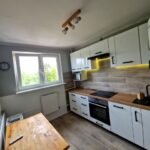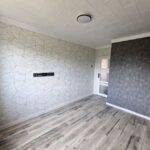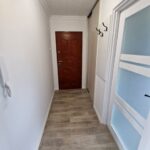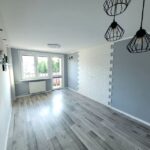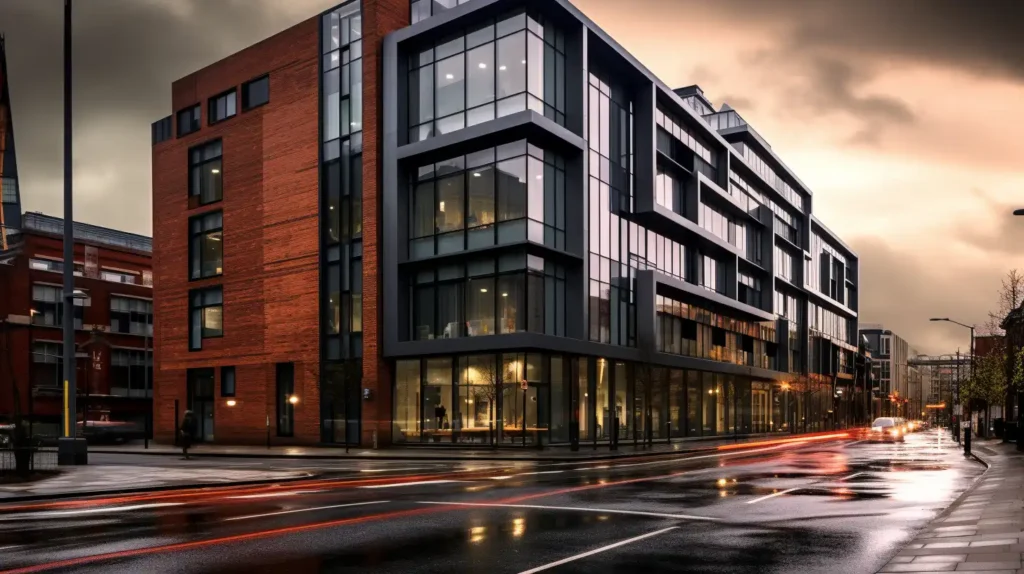Cheap Houses in Poland: Finding Property Below €50,000
Yes, you can still buy a home in Poland for under €50,000. The market offers genuine opportunities in smaller cities, rural areas, and former military towns with fascinating histories. Properties in places like Borne Sulinowo—a once-secret Soviet garrison town—regularly list apartments for €40,000-€45,000. These aren’t Warsaw prices, but they’re real homes where people actually live and build lives.
The catch? You’re buying into Poland’s hidden corners. But for those willing to look beyond the obvious, these places offer affordable living with character.
The Borne Sulinowo Story: A Town That Didn’t Exist
Borne Sulinowo wasn’t on any map until 1992. For nearly fifty years, this town in north-western Poland existed as a classified Soviet military base. The Red Army occupied it from 1945, turning it into one of the largest Soviet garrisons outside the USSR. Polish citizens needed special permits even to approach the area.
The Soviets called it Борне-Сулиново. They built an entire city for 25,000 military personnel and their families. Churches became warehouses. German architecture got Soviet modifications. The town had its own power station, water systems, shops, schools, and even a cinema. It was a slice of the Soviet Union transplanted onto Polish soil.
Then 1993 happened. The last Soviet soldiers withdrew. The base emptied almost overnight. Buildings stood vacant. Infrastructure crumbled. By the mid-1990s, Borne Sulinowo became Poland’s most famous ghost town.
Today? It’s reinvented itself. The population sits around 4,000. Young families move in for affordable housing. Retirees seek a quiet rural life with proper infrastructure. The town markets itself as “Poland’s Atlantis”—the place that didn’t exist. Urban explorers and history buffs visit the remaining Soviet relics.
And people like you? They’re discovering you can own a proper home here for the price of a used car in Western Europe.
The €42,000 Home: What You Actually Get
A 42.7 square metre flat in Borne Sulinowo costs 185,000 złoty. That’s roughly €42,500 at current exchange rates. The per-metre price sits at 4,332 złoty (about €1,000/sqm).
Here’s what that money buys you:
- Two rooms plus kitchen and bathroom
- Soviet-era construction (1960s-1980s)
- Basic but functional condition
- Central heating connected to town system
- Balcony in most units
- Parking space included
- Views of forests and lakes nearby
The buildings look distinctly Eastern Bloc. Concrete panel construction. Utilitarian design. But they’re solid. Soviet military standards meant proper foundations and thick walls. These structures will stand for another fifty years minimum.
The flats typically need cosmetic updates. Original Soviet-era kitchens and bathrooms remain in many units. Budget €5,000-€8,000 for a full refresh. New bathroom fixtures, modern kitchen units, fresh paint, updated flooring. Polish contractors in the area charge reasonable rates.
After renovation, your total cost sits around €50,000. You’ve got a comfortable home in a town with genuine character and one hell of a backstory.
2-Room Flat for Sale in Borne Sulinowo – Great Location, Balcony, Parking – €42,700
A spacious and well-maintained 2-room flat (42.7 m²) for sale in Borne Sulinowo, located on the 3rd floor of a four-story residential block built in 1989. The property features a bright living room (south-facing), a separate bedroom (north-facing), a loggia balcony, and a separate, fully-equipped kitchen with dishwasher, oven, and fridge. The bathroom includes a bathtub, and the flat is ready to move in, with plastic windows and central heating. Additional amenities include a basement (3.2 m²) and an on-site parking space.
Situated in a peaceful, green neighborhood surrounded by meadows, forest, and a lake, the building is well-kept and offers easy access to playgrounds and parking. The flat has full ownership with a land and mortgage register, a monthly maintenance fee of 500 zł, and is listed by a private owner. Conveniently located near shops, a kindergarten (4 minutes on foot), and a bus stop (3 minutes on foot), with a lake just 200 meters away—ideal for those seeking tranquillity close to nature and daily amenities.
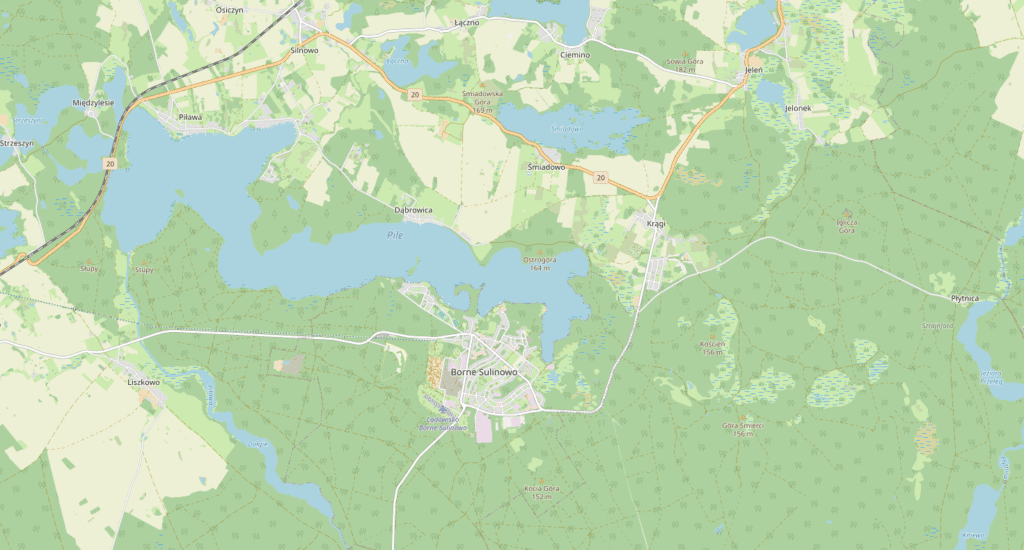
Why People Actually Choose to Live Here
The Soviet history fascinates residents. Living in a town that was literally secret for fifty years creates stories. Neighbours share tales about discovering Cyrillic signs in basements. Old Soviet murals peek through cracked plaster. You’re not just living somewhere—you’re living in a piece of Cold War history.
The natural setting surprises newcomers. Soviet military planners apparently appreciated beauty. Borne Sulinowo sits in the Lake District of West Pomerania. Forests surround the town. Lakes sit minutes away. You can kayak in summer, hike year-round, and actually see stars at night.
Infrastructure exceeds expectations for a small town. The Soviets built for 25,000 people. The current population uses that same infrastructure. Roads work. Water systems function. The heating network covers most buildings. You’re not roughing it in rural Poland—you’ve got proper utilities built to military standards.
The community is rebuilding itself slowly. New cafés opened recently. The town renovated public spaces. An annual “Days of Borne Sulinowo” festival celebrates the weird history. There’s a small but growing community of people who chose this place specifically because it’s different.
Cost of living drops dramatically. Monthly expenses in Borne Sulinowo run 40-50% below those in major Polish cities. Groceries cost less. Utilities stay reasonable despite older buildings. Entertainment’s low cost often makes it available for free.
Who Actually Lives in Borne Sulinowo
- Young families are priced out of Szczecinek or larger cities
- Remote workers who can live anywhere with internet
- Retirees seeking a quiet life with lower expenses
- History enthusiasts drawn to the Soviet legacy
- Nature lovers wanting lake and forest access
- People seeking second homes for weekend retreats
Living in Borne Sulinowo: The Honest Reality
Let’s talk about daily life. The town has basic services. Small grocery stores. A pharmacy. Primary school. Post office. Medical clinic for basic healthcare. That covers essentials.
What it doesn’t have: shopping centres, cinemas, fancy restaurants, nightlife, career opportunities in most fields, extensive medical facilities, or cultural institutions.
For those, you drive to Szczecinek. This town of 40,000 sits 25 minutes away. It’s got everything a normal Polish town offers. Supermarkets. A hospital with emergency services. Secondary schools. Cinema. Proper restaurants. Government offices.
The drive’s easy. Road 172 connects directly. It’s paved, maintained, and traffic’s minimal. People commute daily for work or make weekly trips for shopping and services.
Internet’s decent. Fibre optic reached Borne Sulinowo in recent years. Remote workers manage fine. Streaming works. Video calls function. You’re not cut off digitally.
Public transport exists but barely. Buses run to Szczecinek several times daily. Service isn’t frequent. Most residents own cars. Living here without a vehicle proves difficult unless you work remotely and only need town facilities.
A Typical Week in Borne Sulinowo
- Monday-Friday: Quiet. Many residents commute to Szczecinek. The town feels sleepy.
- Evenings: Walks in the forest. Time at nearby lakes. Neighbours chat. Simple pleasures.
- Weekends: The Small market sometimes operates. Cafés fill up. More life appears.
- Summer: Tourists visit for Soviet history. Town livens considerably.
- Winter: Very quiet. Very cold. Beautiful but isolating if you’re not prepared.
The Szczecinek Connection: Your Lifeline
This town of 40,000 makes Borne Sulinowo livable. Szczecinek functions as the regional hub. It’s got employment if you need work. Schools, if you have kids. Healthcare beyond basic clinic services. Shopping beyond corner stores.
The town’s normal. Not exciting, not depressing. Just functional. Factories producing furniture and metal components employ people. Unemployment sits around 5-6%. The economy ticks along.
Key Szczecinek amenities:
- Hospital with an emergency department and specialist services
- Secondary schools and vocational training centres
- Supermarkets (Biedronka, Lidl, Kaufland)
- Government offices for bureaucratic needs
- Banks for in-person banking requirements
- Cinema and a small cultural centre
- Restaurants beyond pizza and kebab
Living in Borne Sulinowo while accessing Szczecinek creates a balance. You get cheap housing in a beautiful natural setting. You get necessary services within a reasonable distance. It’s not convenient like city living, but it’s not an isolated rural struggle either.
The 25-minute drive matters immensely. Any further, and the inconvenience outweighs the cost savings. Any closer and Borne Sulinowo’s prices would be higher. The distance creates the opportunity.
The Apartment in Detail: What €42,500 Actually Buys
Let’s get specific about that flat. Soviet-era two-room apartments follow standard layouts. You’re getting:
Main room (living/bedroom): 16-18 sqm. Fits a sofa, small table, and some storage. Serves as a living room or bedroom, depending on your needs.
Second room: 10-12 sqm. Works as an edroom, office, or child’s room. Not spacious but functional.
Kitchen: 6-8 sqm. Separate room, not open plan. Original Soviet units are likely still installed. Small but adequate for cooking actual meals.
Bathroom: 3-4 sqm. Toilet, sink, bathtub or shower. Original fixtures were probably avocado green or beige. Functions but lacks charm.
Hallway: 3-4 sqm. Connects everything. Usually has built-in storage cupboards.
Balcony: 3-5 sqm. Most units include one. Views of other buildings, maybe some greenery.
The layout’s logical. Soviet planners prioritised function over aesthetics. Rooms are separate, not flowing. Privacy exists. You can close doors and have quiet spaces.
Windows are typically double-glazed (retrofitted after the Soviet era). Heating comes from a district heating system. Radiators in each room. You control temperature somewhat, but you’re paying for the system whether you use it maximally or not.
Ceilings sit around 2.5 metres. Not soaring, not claustrophobic. Standard.
The architecture is brutalist. Concrete everywhere. Minimal decoration. If you love Soviet aesthetics, you’ll appreciate the unadorned functionality. If you hate concrete buildings, this’ll depress you.
The Renovation Reality for Homeowners
Most buyers update before moving in. Original Soviet fixtures don’t meet modern expectations. Here’s what a typical renovation involves:
Bathroom overhaul (€2,000-€2,500):
- New toilet, sink, shower or bathtub
- Modern tiles replacing Soviet-era ceramics
- Updated plumbing fixtures
- Better lighting
- Maybe a heated floor if being fancy
Kitchen renovation (€1,500-€2,000):
- IKEA-level cabinets work perfectly
- New countertop
- Modern sink and taps
- Updated appliances (cooker, hood)
- Better lighting over work surfaces
Flooring throughout (€1,000-€1,500):
- Laminate flooring in living areas
- Tiles in the kitchen and bathroom
- Remove ancient linoleum or worn parquet
Fresh paint everywhere (€500-€800):
- Walls and ceilings
- Brightens the space immensely
- Covers decades of Soviet-era colours
Electrical updates (€400-€600):
- New sockets and switches
- Better lighting fixtures
- Maybe USB charging points
Total: €5,400-€7,400. Budget €8,000 to cover surprises because old buildings always have surprises.
Timeline runs 4-6 weeks. Local contractors aren’t overwhelmed with work. They start quickly and finish on schedule. You could buy in spring, renovate in summer, and move in by autumn.
Costs Beyond Purchase Price
Let’s be transparent about total expenses. That €42,500 apartment isn’t your only cost.
One-time purchase costs:
- Notary fees: €850-€1,700 (1-2% of price)
- Property transfer tax: €850 (2% of price)
- Legal review: €300-€500
- Property survey: €150-€250
Total transaction costs: €2,500-€3,500
Renovation: €6,000-€8,000 (one-time)
Your all-in cost: €51,000-€54,000 for a completely refreshed home.
Ongoing monthly costs:
- Building maintenance fee: €30-€50 (common areas, structure upkeep)
- Heating in winter: €80-€150 depending on usage and weather
- Electricity: €30-€50
- Water: €15-€25
- Internet: €15-€25
- Property tax: €8-€10 monthly (very low)
Total monthly: €180-€310 depending on season and usage.
That’s extraordinarily cheap compared to Western Europe or even major Polish cities. You’re living for less than €4,000 yearly in housing costs.
Who Should Consider This (And Who Shouldn’t)
This works beautifully for:
Remote workers who can live anywhere. You need decent internet and occasional access to bigger towns. Borne Sulinowo provides both. Your income comes from elsewhere. Your costs drop 50%. The maths works perfectly.
Retirees seeking lower costs in nature. If you’re not working and value quiet over convenience, this delivers. Low expenses stretch retirement income further. Nature access supports a healthy lifestyle. Peace comes standard.
Second-home seekers want an affordable weekend retreat. For €50,000 total, you own a lakeside base. Use it in the summer and at weekends. Maybe rent it out occasionally. No mortgage anxiety over rarely-used property.
Young families need an affordable start. If one partner can commute to Szczecinek and you don’t need urban amenities, this lets you own instead of rent. Kids grow up with forest access. Costs stay manageable on modest incomes.
History enthusiasts are drawn to unique places. If the Soviet backstory excites rather than depresses you, Borne Sulinowo offers something money can’t buy elsewhere—genuine Cold War atmosphere at an affordable price.
This doesn’t work for:
People need urban amenities. No nightlife, limited restaurants, minimal shopping, and no cultural institutions. If you need those regularly, you’ll hate it here.
Anyone without a car. Public transport is minimal. You’re isolated without a personal vehicle. Don’t move here, planning to use buses.
Career-focused professionals. Unless working remotely, job opportunities don’t exist locally. Commuting to Szczecinek works for some roles but limits career options significantly.
People who hate cold and isolation. Winter’s harsh. Days are short. The town feels empty. If seasonal affective disorder hits you, northern Poland in January will destroy you.
Those expecting capital appreciation. Your home won’t increase in value meaningfully. If you need your property to build wealth, look elsewhere. This is about affordable living, not property ladder climbing.
The Second Home Angle
Many buyers use Borne Sulinowo as a weekend retreat. At €50,000 total cost with no mortgage, it’s an affordable second property. You’re not anxious about rarely using it.
Summer use makes perfect sense. The area’s genuinely beautiful from May through September. Lakes for swimming. Forests for hiking. Your own base in the countryside. Bring friends and family without hotel costs.
Winter use requires hardiness. Heating costs run even when you’re not there (to prevent pipes from freezing). The place feels grim in January. But cross-country skiing and winter walks appeal to some.
Short-term rental potential exists. Borne Sulinowo attracts tourists interested in Soviet history. Urban explorers, photography enthusiasts, history buffs. You won’t get rich, but summer weekends book out. Maybe covers your annual costs.
The Soviet angle creates a marketing hook. “Stay in a former classified military town” beats “generic Polish countryside cottage.” Uniqueness sells.
The Soviet Legacy: Living with History
Remaining Soviet landmarks include:
- Former officers’ housing with distinctive architecture
- Abandoned cinema with original Cyrillic signage
- Military parade grounds are now used for festivals
- Underground bunkers are occasionally accessible
The town embraces this history now. Information boards explain the Soviet period in Polish, English, and German. Walking tours operate seasonally. The local museum covers the military era.
For residents, it creates identity. You’re not just living in a small Polish town. You’re living in a place with a unique story. Conversations with visitors happen constantly. You become an unofficial tour guide.
Some find this fascinating. Others find it tiresome. Know yourself. If you love history and don’t mind explaining the Soviet era to curious tourists, you’ll thrive. If you want privacy and anonymity, this might grate.
Practical Concerns: Healthcare, Education, Shopping
Healthcare basics exist locally. The town has a medical clinic for routine matters—prescriptions, basic diagnostics, and minor issues. For anything serious, you drive to Szczecinek hospital (25 minutes).
Emergency response works. Ambulances reach Borne Sulinowo. They’ll stabilise and transport to Szczecinek if needed. You’re not dangerously isolated medically.
Education through primary school exists locally. The town has a primary school serving local children. Quality seems adequate. For secondary education, kids bus to Szczecinek daily. That’s standard in rural Poland.
If you’ve got teenagers, they’ll need to commute. Consider whether that works for your family. Rural Polish teens often bus to town schools. It’s normal but not ideal.
Shopping means small stores or Szczecinek trips. Borne Sulinowo has corner shops covering basics—bread, milk, basics. For proper grocery shopping, most residents drive to Szczecinek weekly.
Biedronka, Lidl, and Kaufland all operate there. You do a big shop, stock up, and return home. Some residents order online delivery now. Options expand.
Weather and Seasonal Reality
Northern Poland gets properly cold. January temperatures might hit -10°C. Days are short—sunset at 4:30 PM in December.
Heating costs jump in winter. Budget €120-€150 monthly, November through March. Buildings are insulated but not to contemporary specs.
Summer’s lovely. June through August brings long days, pleasant temperatures (20-25°C), and vibrant green everywhere. This is when the area shines. The lake is warm enough for swimming. Forests buzz with life.
Spring and autumn are brief. March-April and October-November transitions quickly. Beautiful but fleeting. October brings mushroom season—locals forage extensively.
Seasonal affective disorder is real here. The combination of cold, darkness, and isolation hits some people hard. If winter already challenges you mentally, northern Poland will amplify that. Consider seriously.
The Long-Term Picture
Borne Sulinowo won’t boom. Accept that now. The town found its niche as an affordable alternative with a unique history. The population should stay stable. Maybe tick up slightly as remote work enables location flexibility.
Your home won’t appreciate significantly. That €42,500 purchase might be worth €48,000 in ten years. Maybe. Inflation will erode that nominal gain. You’re buying for use, not profit.
Infrastructure should hold up. Those oversized Soviet systems still have life. Municipal authorities maintain them adequately. The town’s not collapsing—it’s stabilised.
The Soviet angle becomes more interesting over time. As 1993 recedes into history, the uniqueness sharpens. In 2025, there are still Poles who remember the Soviet occupation personally. By 2045, it’ll be pure history. Your home sits in an increasingly rare place.
Community development continues slowly. New businesses open occasionally. Young families add energy. The trajectory’s positive if modest. You’re not watching decline—you’re watching careful rebuilding.
Comparison: What Else Could €50,000 Buy?
Rural cottage in western Poland: Similar price but worse infrastructure. You might get more land and prettier buildings, but utilities are questionable. The Internet’s dodgy. You’re genuinely isolated.
Small apartment in Wrocław suburbs: €80,000-€100,000 for equivalent size. You’re in a larger city’s orbit but paying double. Commute times similar to Borne-Szczecinek but through traffic.
Rural France or Spain: Glamorous idea, but €50,000 buys ruins requiring €100,000 in renovations. Plus, you’re navigating foreign systems. Borne Sulinowo offers a one-in condition at an all-in €50,000.
Caravan/mobile home in the UK: Similar total cost, but you don’t own land. Site fees eat your savings. Deprecating asset versus property that holds value (even if not appreciating).
Borne Sulinowo offers a functional home in a beautiful setting with fascinating history at a price point that’s genuinely affordable. The alternatives all compromise differently—worse infrastructure, higher cost, or foreign complications.
Making the Decision
Visit first. Obviously. Don’t buy based on the article and photos. Spend a week in Borne Sulinowo. Rent something locally. Experience the isolation, the winter darkness, the drive to Szczecinek.
Walk the forests. Swim the lakes. Eat at the cafés. Talk to residents. Check internet speeds. Drive around at night. Experience the concrete brutalism. Sit with Soviet history.
If, after a week, you’re still excited, this might work. If you’re already feeling claustrophobic, you’ve saved yourself a mistake.
Consider r trial period. Rent in the area for six months before buying. Experience a full seasonal cycle. Test the commute through winter. See if remote work actually functions. Confirm the lifestyle fits before committing.
Run your personal numbers. Calculate your total monthly costs, including car expenses for Szczecinek trips. Add up your income sources. Confirm the maths work for your situation. €300 monthly total costs sound great until you realise you need €1,500 monthly to live comfortably.
Think five years ahead. Your needs will change. Kids grow up. Health needs increase. Career paths shift. Will Borne Sulinowo still work? If you can’t confidently say yes, reconsider.
The Bottom Line
Cheap houses in Poland—particularly in places like Borne Sulinowo—deliver what they actually offer if you want. Affordable home ownership in a beautiful natural setting with fascinating history. Access to basic services with a bigger town nearby. Low cost of living frees up money for other priorities.
They don’t deliver urban convenience, career opportunities, property appreciation, or easy resale. They don’t suit everyone. But for remote workers, retirees, second home seekers, and people prioritising low costs over amenities, the proposition makes sense.
That €42,500 apartment represents a genuine opportunity for specific buyers. After €8,000 in renovations and €3,000 in transaction costs, you own a proper home for €53,500 total. Your monthly housing costs run €250-€300. You’re living in a former secret Soviet garrison town surrounded by lakes and forests.
It’s not for everyone. It might be for you. The only way to know is to visit, experience it, and decide if living in Poland’s Atlantis—the town that didn’t exist—sounds like home or like exile.
Frequently Asked Questions
What’s it actually like living in a former Soviet military town?
Honestly? Quieter than you’d expect. The Soviet legacy shows up in architecture and occasional Cyrillic signs, but daily life feels normal Polish now. You’re not dodging tanks or living in some dystopian film set. It’s just a small town with an interesting backstory. The concrete architecture divides opinion—some find it fascinating, others depressing. Visit before buying to see which camp you’re in.
Is €42,500 for 42.7 sqm actually affordable for permanent living?
Yes, especially compared to alternatives. After €8,000 renovations, you’re all-in under €55,000 with monthly costs around €250-€300. That’s less than many people pay monthly for rent alone in Western Europe. For remote workers or retirees with stable income from elsewhere, the maths work beautifully. For those needing local employment, factor in limited job opportunities.
Can you actually get proper internet for remote work?
Yes. Fibre optic reached Borne Sulinowo in recent years. Speeds are adequate for video calls, file transfers, and streaming. Remote workers manage fine. It’s not a cutting-edge gigabit service, but it’s functional. Check the specific address before buying to confirm connection quality, but the infrastructure exists now.
What about reselling later—will anyone buy it?
Liquidity is limited but not zero. The buyer pool for homes in 4,000-person former military towns isn’t huge. Expect 6-12 months to sell, maybe longer. Price it realistically, and someone will buy—there’s always demand for genuinely affordable homes. Just don’t expect a quick sale or bidding wars. This is buy-and-hold territory, not a flip market.
How isolated do you feel living there, really?
Depends entirely on your personality and needs. If you’re comfortable with quiet, enjoy nature, and don’t need constant social stimulation, it feels peaceful. If you’re used to urban life with restaurants and activities on your doorstep, it’ll feel isolating. The 25-minute drive to Szczecinek helps—you’re not truly remote. But winter, especially, can feel very quiet and dark for those unaccustomed to rural living.


